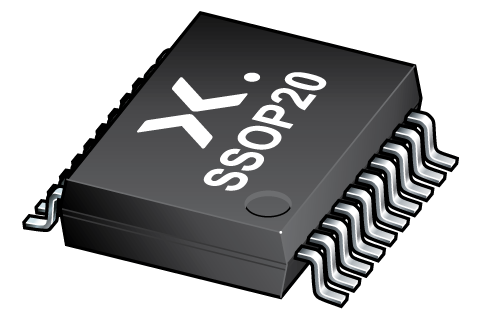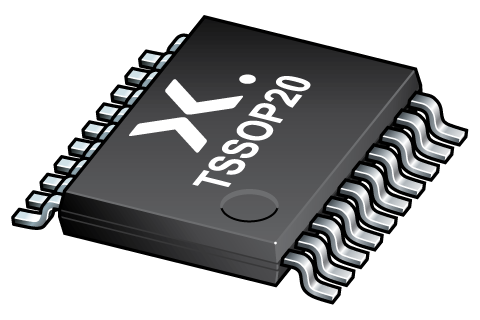
Register once, drag and drop ECAD models into your CAD tool and speed up your design.
Click here for more information74HC7541DB
Octal Schmitt trigger buffer/line driver; 3-state
74HC7541;74HCT7541是高速硅栅CMOS器件,与低功耗肖特基TTL (LSTTL)针脚兼容。该类器件的规格符合JEDEC标准No. 7A。
74HC7541;74HCT7541八个带3态输出和施密特触发器动作的反相缓冲器/线路驱动器。 3态输出通过输出使能输入OE1 和OE2控制。OEn上的高电平使输出呈高阻抗关断状态。数据输入上的施密特触发器动作将缓慢变化的输入信号转换成清晰无抖动的输出信号。
74HC7541;74HCT7541等同于74HC541;74HCT541,但在数据输入上具有迟滞。
Alternatives
Features and benefits
- 非反相输出
- 低功耗
- ESD保护:
- HBM JESD22-A114F超过2000 V
- MM JESD22-A115-A超过200 V
- 多种封装选择
- 额定温度范围为-40 °C至+85 °C和-40 °C至+125 °C
参数类型
| 型号 | Product status | Package name |
|---|---|---|
| 74HC7541DB | End of life | SSOP20 |
PCB Symbol, Footprint and 3D Model
| Model Name | 描述 |
|---|---|
|
|
封装
下表中的所有产品型号已停产。参见表 停产信息 了解更多信息。
| 型号 | 可订购的器件编号,(订购码(12NC)) | 状态 | 标示 | 封装 | 外形图 | 回流焊/波峰焊 | 包装 |
|---|---|---|---|---|---|---|---|
| 74HC7541DB | 74HC7541DB,118 (935190300118) |
Withdrawn / End-of-life | HC7541 |

SSOP20 (SOT339-1) |
SOT339-1 |
SSOP-TSSOP-VSO-WAVE
|
SOT339-1_118 |
| 74HC7541DB,112 (935190300112) |
Obsolete | HC7541 | Not available |
环境信息
下表中的所有产品型号已停产。参见表 停产信息 了解更多信息。
| 型号 | 可订购的器件编号 | 化学成分 | RoHS | RHF指示符 |
|---|---|---|---|---|
| 74HC7541DB | 74HC7541DB,118 | 74HC7541DB |
|
|
| 74HC7541DB | 74HC7541DB,112 | 74HC7541DB |
|
|
文档 (7)
| 文件名称 | 标题 | 类型 | 日期 |
|---|---|---|---|
| 74HC_HCT7541 | Octal Schmitt trigger buffer/line driver; 3-state | Data sheet | 2017-03-17 |
| AN11044 | Pin FMEA 74HC/74HCT family | Application note | 2019-01-09 |
| hc7541 | 74HC7541 IBIS model | IBIS model | 2021-01-04 |
| Nexperia_package_poster | Nexperia package poster | Leaflet | 2020-05-15 |
| SOT339-1 | plastic, shrink small outline package; 20 leads; 0.65 mm pitch; 7.2 mm x 5.3 mm x 2 mm body | Package information | 2020-04-21 |
| HCT_USER_GUIDE | HC/T User Guide | User manual | 1997-10-31 |
| SSOP-TSSOP-VSO-WAVE | Footprint for wave soldering | Wave soldering | 2009-10-08 |
支持
如果您需要设计/技术支持,请告知我们并填写 应答表 我们会尽快回复您。
模型
| 文件名称 | 标题 | 类型 | 日期 |
|---|---|---|---|
| hc7541 | 74HC7541 IBIS model | IBIS model | 2021-01-04 |
PCB Symbol, Footprint and 3D Model
| Model Name | 描述 |
|---|---|
|
|
How does it work?
The interactive datasheets are based on the Nexperia MOSFET precision electrothermal models. With our interactive datasheets you can simply specify your own conditions interactively. Start by changing the values of the conditions. You can do this by using the sliders in the condition fields. By dragging the sliders you will see how the MOSFET will perform at the new conditions set.

